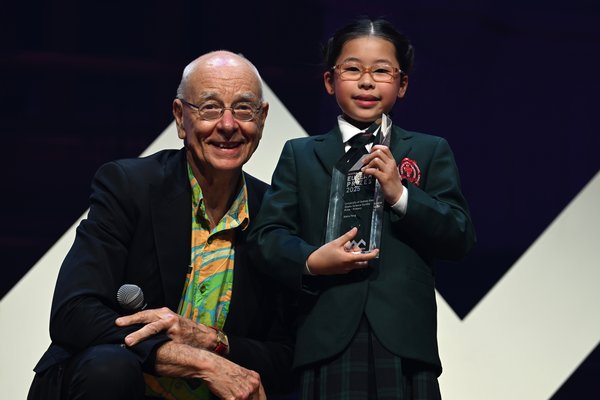The crazy world of chlorophyll
Who Darcy B., Ashfield Boys High School, NSW
What In his short film The Crazy World of Chlorophyll, Darcy investigates the dominant colour in nature: green. With the help of animation and stop-motion, he explains why so many leaves and plants share the same traits, visualises the photosynthesis process and shares just how many living things rely on the superpower pigment, chlorophyll.
Winner of the 2023 University of Sydney Sleek Geeks Science Eureka Prize – Secondary.

In his short film The Crazy World of Chlorophyll, Darcy investigates the dominant colour in nature: green.
Image: Supplied© Australian Museum
You set out to learn why most plants are green. What did you uncover?
I found out that the main reason for their green colour is a tiny pigment called chlorophyll, which is in plants’ chloroplasts and helps a lot with photosynthesis. In the photosynthesis cycle, chlorophyll absorbs the sunlight and turns it into chemical energy. This energy allows the plant to turn carbon dioxide and water into glucose. So, chlorophyll is essential for photosynthesis in plants, but that doesn’t explain why they’re green.
I kept researching and learned that this has to do with the wavelengths from the sun. You see, when the sun shines, we can only see the whitish light (though please don’t stare at the sun to test this!). But in this light, there’s a range of colours that aren’t visible to us. Each colour has its very own size or length, called a wavelength. Some colours have longer lengths, and some have shorter ones. Chlorophyll molecules absorb light most efficiently in the blue and red parts of the electromagnetic spectrum but do not absorb green light as effectively, so it is reflected to our eyes, making plants appear green!
What sparked your interest in this topic?
When I first saw the theme ‘green’, I thought about it for a while. Of course, the first thing I came up with of was plants, but I decided that was too boring, so I kept contemplating. When I couldn't come up with anything better, I considered some deep, scientific questions about plants and that’s when I thought of a question that was so simple yet unknown to many kids. ‘Why are most plants green?’ I was amazed that I had never wondered this and knew it would be my topic!
What was the most interesting thing that you learned during your research?
I was very surprised by how complicated the reason for plants being green was. I thought it was just a gene or something but learnt there was a lot more to it!

Darcy accepted his Eureka Prize from Professor Marcel Dinger (left) and Dr Karl Kruszelnicki (right) in front of more than 400 people.
Image: Mel Koutchavlis© Australian Museum
What did you enjoy most about the film-making process?
I loved doing all of it but probably enjoyed editing the video the most. I’ve always liked filming and editing short movies with my sister and cousin, so this was a fun opportunity to do that and win a prize!
Why did you decide to enter the Sleek Geeks Science Eureka Prize?
My dad told me about it around the start of the year, he manages social media for a science company and saw the competition. I didn't really investigate until a few months before entries closed. I love filmmaking so it looked fun and it also had a pretty good prize. I researched and filmed for a week or two, and a few months later, I won!
Sponsored by the University of Sydney, the Sleek Geeks Science Eureka Prize encourages students to communicate a scientific concept in a short film. It is intended to support budding young scientists across the nation, who will be our future leaders in research, discovery and communication.











